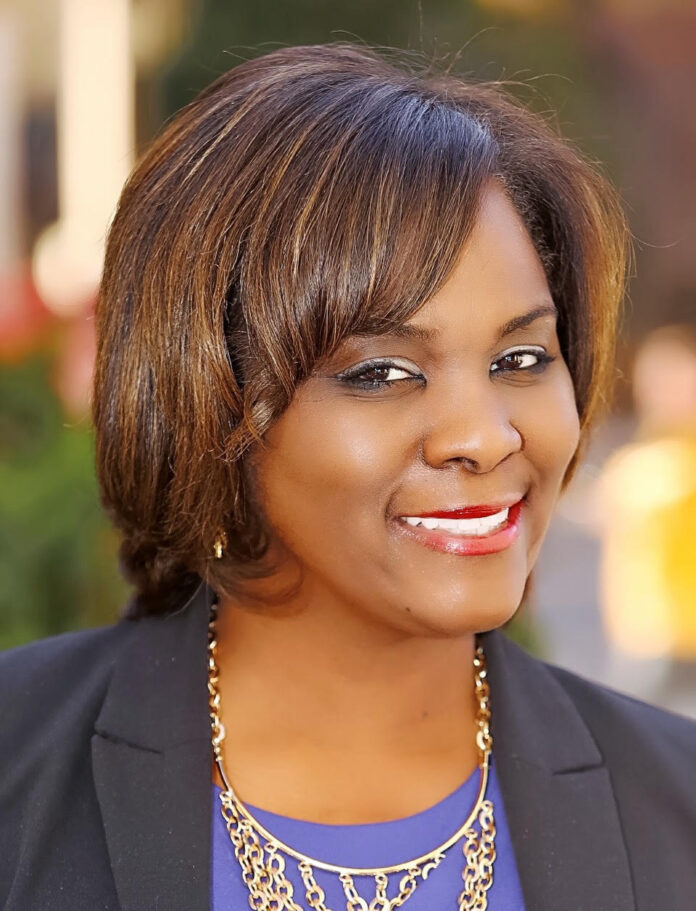
By Antonio Ray Harvey, California Black Media
A report the Public Policy Institute of California (PPIC) released in June found that access to fast and reliable home internet continues to increase in the Golden State, but many households eligible for broadband access assistance are still without service.
The Federal Communications Commission (FCC) estimates that at least 3.7 million California households are eligible for digital-access funding, but as of March 2022, only 1.2 million households were participating in programs created to offset high access costs for low-income households.
Therefore, the FCC says it is seeking community-based organizations connected to local communities to engage in outreach and education.
“We have issues nationwide with access, availability and affordability,” Sanford Williams, Special Advisor to the Chairwoman Jessica Rosenworcel and Deputy Managing Director of the Federal Communications Commission, said at a PPIC virtual conference on July 18.
“The one thing we’ve found on the government level is that folks listen to us, but they trust people they know. So, the biggest thing for us, from my perspective and the FCC, we get community organizations involved to get the message out,” he added.
Williams was one of the panelists at a three-day virtual conference the PPIC hosted from July 18-20 to discuss internet access, California’s unprecedented investments in broadband, and barriers to digital access across California’s diverse communities. The conference looked at how deficits in both infrastructure and information keep Californians disconnected from the internet.
According to PPIC, the U.S. Census Bureau’s American Community Survey (ACS), found that 85% of California households had high-speed internet at home in 2021– a slight improvement from 84% in 2019, before the onset of the COVID-19 pandemic.
Since 2019, access to broadband at home has become more common for most demographic groups. But racial and ethnic gaps persist: 81% of Latino, 83% of Black, 87% of White, and 88% of Asian households reported having broadband access at home in 2021, the PPIC shared.
PPIC explains that in 2021, slightly fewer California households (10%) did not have access to a desktop, laptop, or other computing devices at home than in 2019, when 11% lacked access.
Nationally, approximately 40% of Black American households— as opposed to 28 % of White American households—don’t have high-speed, fixed broadband, according to the Mckinsey & Company article, “Closing the Digital Divide in Black America,” published on Jan. 18, 2023.

One of the first federally funded initiatives, the FCC’s Emergency Broadband Benefit (EBB) program, launched in 2021, offered a discount of up to $50 per month for broadband services to eligible households.
The EBB expired on Dec. 31, 2021, and was replaced by the Affordable Connectivity Program (ACP), which offers long-term support for households. The maximum monthly ACP benefit is $30, and eligibility criteria expanded to include a household income at or below 200% of the federal poverty line.
Dr. Nicol Turner-Lee, another panelist that participated in the “Bridging California’s Digital Divide,” virtual conference, warned that the ACP funding will eventually run out and could present more access problems for low-income and rural households.
“The ACP came out of the emergency broadband program, a pandemic-relief program that has had exponential growth,” Tuner-Lee continued. “I think 19 million have subscribed across the U.S., but there are challenges. When it expires in 2024 or when it runs out of money, the same 19 million people that subscribed will have these same challenges.”
Turner-Lee’s portfolio includes leading research and policy work at the Brookings Institution. Her book on the digital divide titled “Digitally Invisible: How the Internet is Creating the New Underclass” is scheduled to be published in 2024.
“We have to keep talking about affordability, but we need to talk about it in a more permanent way,” Turner-Lee said. “It’s not necessary to give people access to shiny objects and devices but to connect them to a world of opportunities. That should justify and validate why this has to be a long-term program.”
PPIC is a nonprofit organization that provides objective and nonpartisan research to guide California’s public policy. Its aim is to produce high-quality analysis that promotes dialogue and inspires sustainable policy solutions.
“We looked at the research on what’s barring folks from enrolling in the ACP and one of those barriers is just simply being aware that the ACP exists,” Ji Soo Song, Digital Equity Advisor for the US Department of Education’s Office of Educational Technology said during a session at the PPIC conference.
“It seems like in low-income households, less than 50% knew that it existed. That’s why we’ve been working with the FCC to launch a national campaign online to make sure that folks take advantage of it,” Song told the panelists.
On the final day of the virtual conference, panelists discussed the importance of digital equity in enhancing access outcomes across various sectors, including education, healthcare, and the economy.
The panelists agreed that building a digital infrastructure based on equity is crucial for an inclusive recovery from the pandemic. But Mei Wa Kwong, the Executive Director of the Center for Connected Health Policy (CCHP), the federally designated National Telehealth Policy Resource Center, said equity won’t be a “one-size-fits-all” solution.
“It’s going to take us a while to get there because when you are talking about digital equity, there’s a lot of infrastructure involved,” Kwong said. “Infrastructure does not move that quickly. It takes a while to build up things.”
Only a third of eligible California households receive federally subsidized internet. Most eligible households have not received the ACP internet subsidy, PPIC reports. Only 36% of over eight million eligible households had enrolled by April 2023, according to the California Department of Technology.
“Part of this conversation around affordability is not about whether people can get access to competitive providers but more so whether or not people understand the relevance of broadband in their lives,” Turner-Lee said.
“It’s important that we connect the dots to improve the outcomes for people,” she added.


